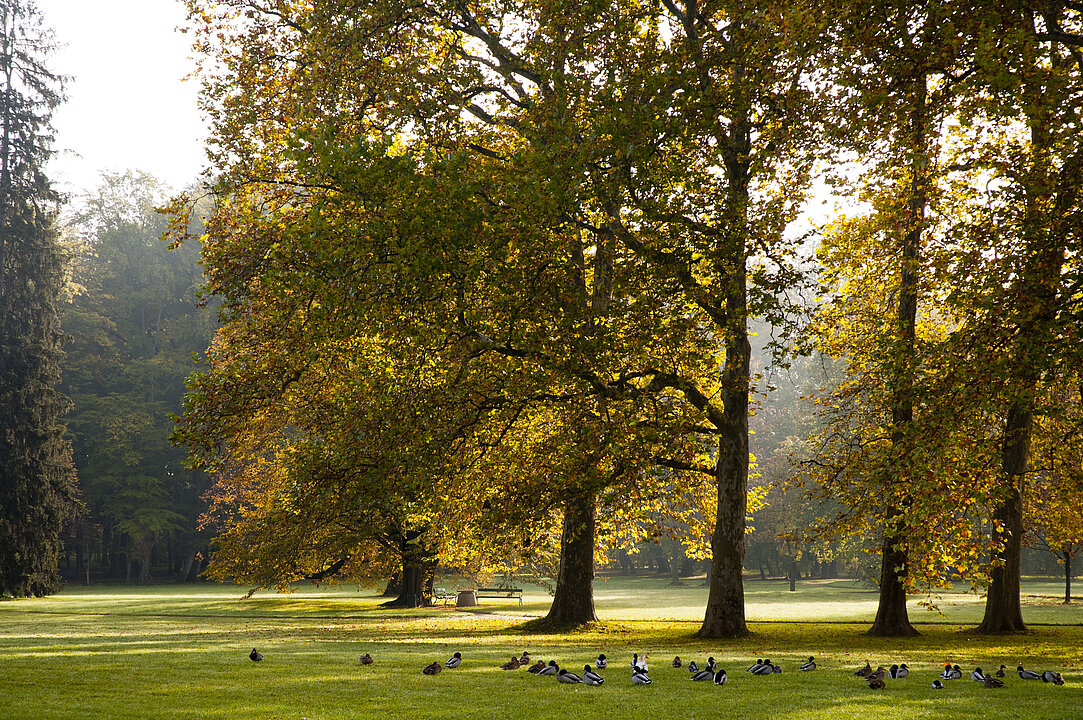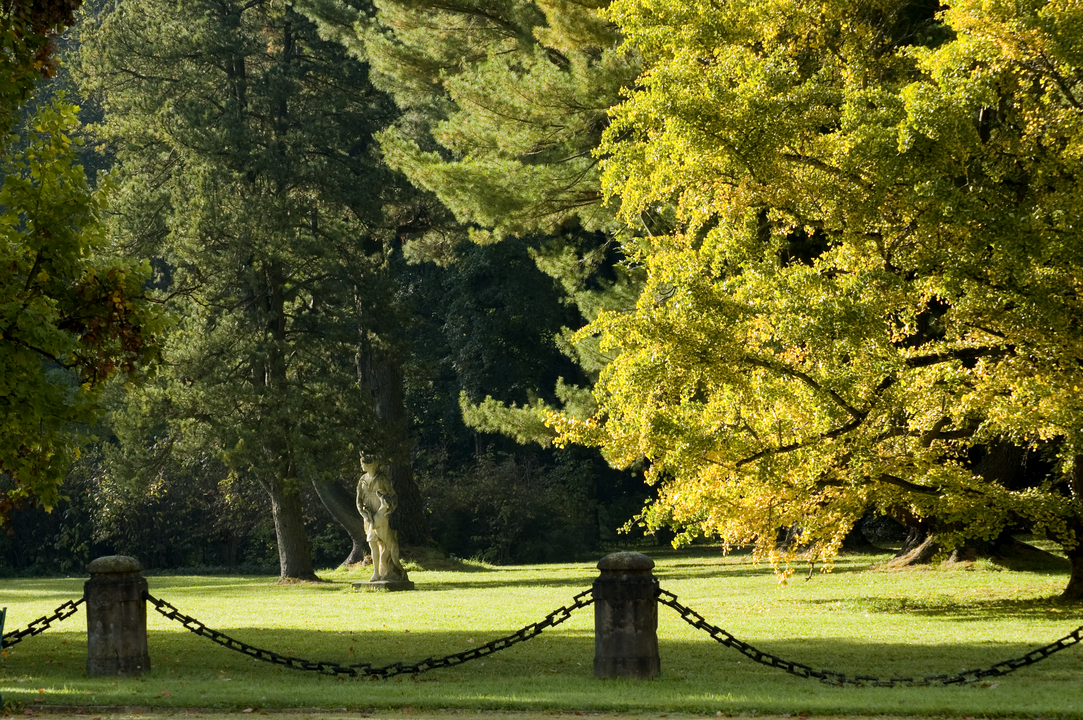Eggenberg Park, with its picturesque woodland sceneries and sweeping lawns, has preserved its poetic character as a living landscape painting as it was originally conceived in the 19th century. After 1810, Eggenberg Palace was only occupied for a few weeks in the year. It was Johann Hieronymus Count Herberstein and his wife Marie Henriette who initiated the ambitious transformation of the formal Baroque gardens into an English style landscape garden.
After 1820, Jérôme Count Herberstein commissioned two head gardeners from Silesia, Franz Matern and Friedrich Wägener, to design an English landscape garden that should represent the romantic ideals of the new era, "...a perfect landscape=painting" composed to recreate nature in all its diversity. In this era the Baroque garden was now viewed as a rigid formal system alienated from the natural landscape, whereas the romantic garden represented the idealised beauty of unconstrained nature.
For this very reason, the straight alleys, hedge maze and Baroque garden terrace were all removed to make way for winding paths leading through shrubberies of exotic plants and attractive architectural features. Created as a vantage point, an artificial hill covered with roses and conifers was constructed in the gardens at Eggenberg in 1835. A wooden "parasol" provided shade for those wanting to sit and take in the views after walking up the winding path to its summit. Picturesque sceneries of woodland groves and solitaires merged with open lawns and a delightful pond to create magnificent vistas.


























